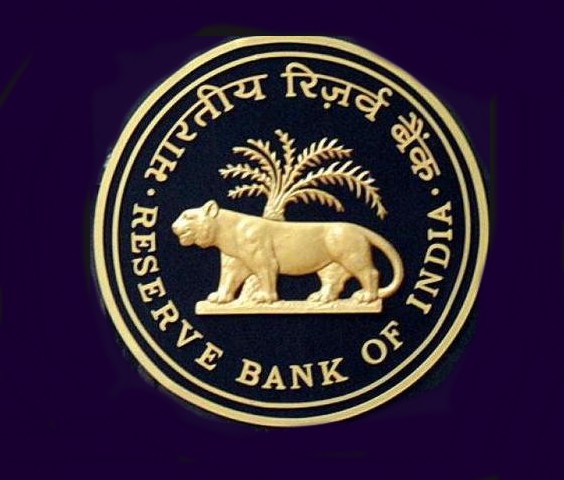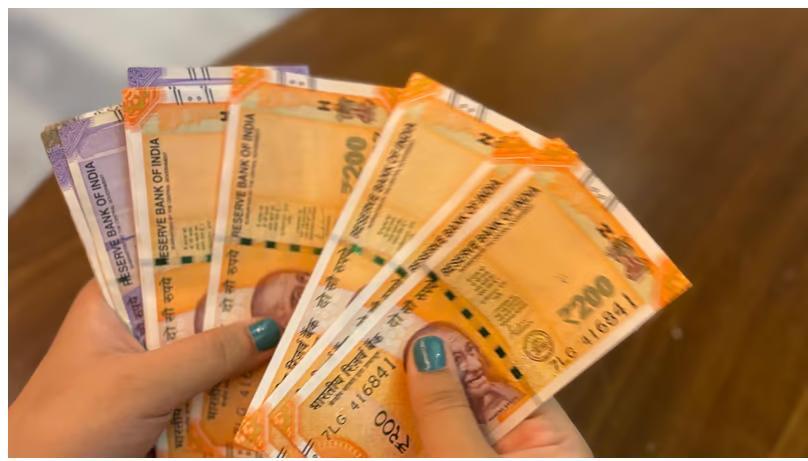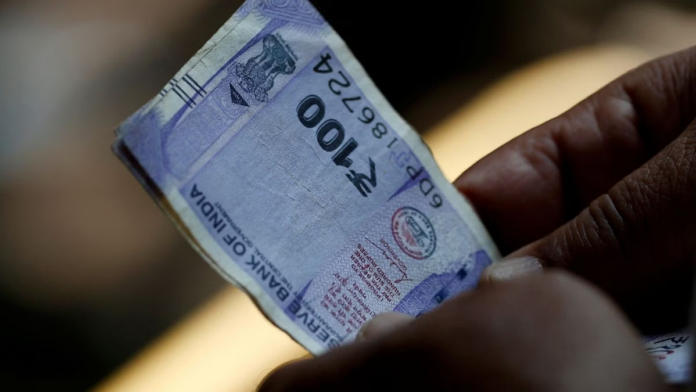In a bid to stabilize the Indian rupee, the Reserve Bank of India (RBI) has reportedly sold over $26 billion of its foreign currency reserves since the end of September. This large-scale intervention aims to curb the rupee’s depreciation, particularly as foreign institutional investors (FIIs) continue to pull funds out of Indian markets. The situation has been exacerbated by a surge in the dollar’s value, following former U.S. President Donald Trump’s re-election, which has contributed to increased volatility in currency markets worldwide.

The Rupee Under Pressure: Understanding the Current Decline
The Indian rupee has been facing persistent downward pressure, primarily due to FIIs’ continued withdrawals from Indian equities and bonds. This withdrawal has led to a significant outflow of foreign capital, which weakens demand for the rupee while strengthening the dollar. On Friday, the rupee hit a historic low of 84.37 against the dollar, marking a critical point for India’s central bank, which has been actively involved in managing currency volatility.
Foreign institutional investors have turned more cautious in recent months, largely influenced by global events and shifts in risk sentiment, including Trump’s unexpected political comeback. His re-election has led to a strengthening dollar, as investors anticipate policies that could bolster the U.S. economy and enhance the greenback’s appeal. Consequently, emerging markets like India are experiencing capital outflows, adding pressure on the rupee and other currencies in the region.

Why RBI Intervened with a $26 Billion Sale of Foreign Reserves?
The RBI’s $26 billion sale of foreign currency reserves serves as a buffer to prevent further depreciation. By selling dollars in the open market, the RBI increases the supply of dollars, which helps to balance the demand and prevents a steep fall in the rupee’s value. This intervention, however, comes at a cost. Foreign reserves are a finite resource, and constant selling can deplete the country’s reserves, impacting India’s ability to handle future currency fluctuations.
India’s foreign exchange reserves, once among the highest globally, have been gradually decreasing as the central bank actively supports the rupee. While this intervention is vital for maintaining currency stability, it also highlights the vulnerability of emerging economies to external financial shocks.
Impact of Trump’s Re-Election on Global Markets and India’s Currency
The re-election of Donald Trump has renewed focus on U.S.-centric policies, which have historically impacted global markets. Investors are increasingly moving capital to the U.S. in anticipation of stronger economic growth and a potential increase in interest rates. This shift has resulted in a stronger dollar, making investments in emerging markets less attractive. For India, this trend means a reduction in foreign investment, particularly from FIIs who view the U.S. as a safer, more profitable destination in the short term.
The strengthening dollar affects India in several ways. Primarily, it makes imports, particularly oil, more expensive, adding to inflationary pressures. For a country heavily reliant on oil imports, a weak rupee can strain both public finances and consumer expenses, impacting the economy at multiple levels.
Potential Long-Term Consequences of Forex Intervention
While the RBI’s intervention has helped stabilize the rupee in the short term, selling foreign reserves has long-term implications. Depleting reserves to control currency depreciation can limit India’s ability to respond to future global financial disruptions. Forex reserves are also vital for maintaining investor confidence, as they provide a cushion for economic stability.
Additionally, constant intervention might send a signal to the global market that the rupee is at risk, potentially attracting speculative activities that can further destabilize the currency. If the rupee continues to decline, the RBI may have to implement other measures, such as raising interest rates, though this comes with its own set of challenges for economic growth.
RBI’s Next Steps in Addressing Rupee Depreciation
To manage the currency’s value while conserving foreign reserves, the RBI may look to alternative measures. These could include monetary tightening, through interest rate hikes, to make investments in India more attractive. However, such moves could slow economic growth, making it a challenging choice for policymakers. Additionally, the RBI could work to encourage more foreign direct investment (FDI) to boost inflows, which would help offset some of the outflows caused by FII withdrawals.
Furthermore, the government may explore ways to reduce dependency on imports by encouraging domestic production, particularly in critical sectors such as energy. Reducing import bills can help improve India’s current account balance, easing pressure on the rupee.
Navigating a Challenging Economic Landscape
The RBI’s recent sale of $26 billion in foreign reserves underlines the challenges India faces in maintaining currency stability amid global uncertainties. While this intervention has provided temporary relief for the rupee, the underlying pressures remain, with the strong dollar, global political shifts, and capital outflows shaping the currency’s future trajectory. As the central bank balances intervention with reserve management, the path forward will require strategic economic measures to sustain the rupee’s value without compromising India’s long-term financial health.
With global economic factors increasingly influencing India’s currency, the RBI’s proactive measures are crucial. However, sustainable solutions, such as enhancing domestic production, attracting steady FDI, and reducing reliance on volatile FII inflows, may offer the most resilient path forward in shielding the rupee from future external shocks.

